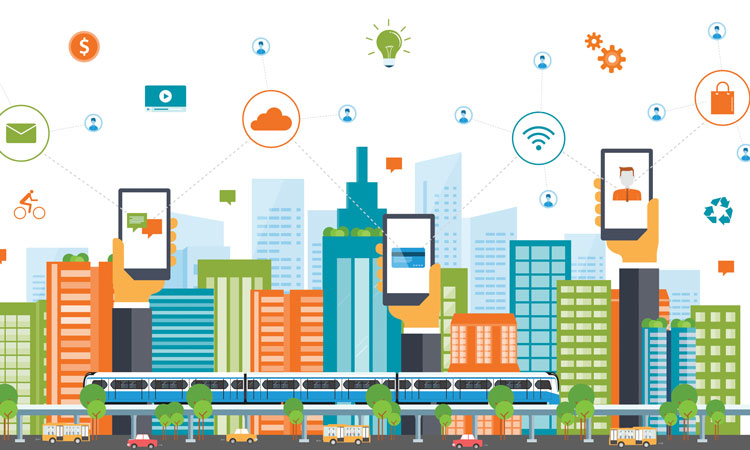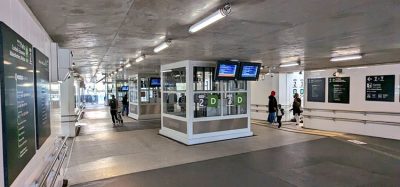The symbiotic ecosystem of smart mobility and smart cities
- Like
- Digg
- Del
- Tumblr
- VKontakte
- Buffer
- Love This
- Odnoklassniki
- Meneame
- Blogger
- Amazon
- Yahoo Mail
- Gmail
- AOL
- Newsvine
- HackerNews
- Evernote
- MySpace
- Mail.ru
- Viadeo
- Line
- Comments
- Yummly
- SMS
- Viber
- Telegram
- Subscribe
- Skype
- Facebook Messenger
- Kakao
- LiveJournal
- Yammer
- Edgar
- Fintel
- Mix
- Instapaper
- Copy Link
Posted: 2 August 2016 | Marko Forsblom | No comments yet
The global megatrend of urbanisation has been a major driver for the ‘smart city’ phenomenon, together with the digitalisation that spreads to every corner of our society. In this urbanisation process, 2015 marked an important tipping point. Half of the global population now live in cities with figures rising by approximately 1.4 million people each week; that figure is double the amount of people living in the Finnish capital, Helsinki. Marko Forsblom, CEO of ITS Finland, explores the future requirements of smart cities and the big changes and new opportunities that digitalisation, automatisation, electrification and servitisation will bring to the industry.


This progress requires new buildings, new roads, new transport systems and new everything. It is said that 75 per cent of the infrastructure that will be in place by 2050 does not exist today. This development brings huge business opportunities to all kinds of companies, but we have to find new smarter solutions to accomplish this huge task, because business-as-usual urbanisation patterns would cause a lot of difficulties. Cities already produce 70 per cent of energy-related greenhouse gas emissions and traffic crashes claim 1.2 million lives per year, with developing cities carrying the greatest burden. Traffic congestion cost Rio de Janeiro and São Paulo a combined $43 billion in 2013 alone. In Beijing the costs of congestion and air pollution are estimated to be 7-15 per cent of GDP. Urbanisation costs the United States alone $400 billion per year. The price tag of urbanisation is enormous and that’s why we need smarter solutions.
Smart cities require smart mobility
The transport sector is on the cusp of its greatest change since the invention of the automobile. Driving forces behind this change include increasingly strict transport policy objectives, such as emissions targets, as well as the diverse possibilities for the development of new services and effectiveness brought by digitalisation.
Additionally, the transport sector’s multi-trillion Euro market is appealing to businesses and inspires innovation. Transport is a significant component of global economy. Households, for example, in the EU use the second largest amount of money on transport costs, only exceeded by the amount they use on housing. In Finland the transport sector’s turnover is around €30 billion, and globally it is in the trillions.
Currently the transport sector is a strictly regulated and ineffective entity which has seen no significant new innovations at system level in decades. The system is based on private car use. The utilisation rate of private cars is under five per cent and a majority of the time they are used by only one person at a time.
The business concepts for this notable market entity are in the process of a massive change. International market shares are currently being divided amongst new mobility concepts and operators with the best innovations.
Big change in transport opens new possibilities
According to some estimates, the number of cars worldwide will double to two billion within the next decade. The current global trend of increasing car numbers has forced the transport system into a situation where objectives related to the smooth flow, emissions and safety of transport cannot be met, and instead, in many places, the transport system is headed for crisis. In many cases traffic and transport have become an obstacle for the development of cities and the well-being of people. Thus, there is genuine demand for change.
The transport sector’s three largest megatrends are automatisation, electrification and servitisation. According to the vision of experts, the future’s transport system will – for the most part – be automated and completely emission-free, and its operations will be based on compatible physical and virtual services.
Digitalisation is a great opportunity for transport. Fine-tuning of the current system and authority-driven price competition are no longer enough. Extensive changes in different sectors usually come from outside the sector. This is also the case here; global megatrends such as digitalisation, the sharing economy, virtualisation, the growing role of services and automation create a foundation for an entirely new type of service concept. In practice, these refer to seamless cooperation between different modes of transport as ‘door-to-door’ services, new services based on car- and ride-sharing and the seamless linking of these and public transport into a service entity. Fixed timetables and stops will be a thing of the past, and we will move to real-time reserved services that will flexibly meet customer needs. Physical mobility will also be replaced by virtual services, as distance to work, meetings, medicine and teaching become more popular. Information has become the fifth form of transport; we are increasingly transitioning from ownership to utilisation and from transport networks to information networks.
Together, these different factors – the transport system crisis, an enormous market, opportunities presented by digitalisation and automation, as well as the changing needs and practices of users – create the foundation for new transport policy-thinking and the future’s service-driven transport system. We call this the Mobility as a Service (MaaS) concept.
Role of services already growing in transport
The growth of digitalisation and the growth of the role of services are already ongoing in transport. This is evident in numerous applications and new service concepts like MaaS.fi, Tuup, Über, Lyft, Zipcar, Moovit, Split, etc. However, new services have met numerous problems during their efforts to access the heavily regulated market. Currently, it is typical for public administration to play a strong role in the transport market. Access to the transport market and operating therein are regulated in great detail and regulation is predominantly implemented transportation mode-specifically. At its worst, current regulation has even worked against its original purpose and has prevented the development of services that benefit travellers.
In Finland, the change will be driven resolutely in line with the government programme. A reform to the regulation of the transport market is ongoing in the scope of the Transport Code project, and the objective is to create the type of regulation environment in Finland that will allow and encourage market actors to develop new services. Together with strong mobile expertise, enabling governance will create an excellent foundation for the development of new services that utilise digitalisation.
Public administration as a facilitator of change
The future transport system will be built largely on services that are based on traditional transport infrastructure and information infrastructure. The effectiveness and functionality of the transport system will depend on the quality and compatibility of structures maintained by the public and private sectors.
Enabling governance will make space for market-driven operators but will also ensure that social objectives are achieved. However, market-driven services will not be established everywhere. Also, not all market effects can be predicted; enabling governance must aim at agility. A good tool for achieving this is the culture of experimentation which is also emphasised in the government programme. Equality between citizens and regions must be taken into account, even in market-driven transport. The services related to the transport system must be reasonably accessible to clients throughout Finland and they must meet the minimum requirements for safety, sustainability and accessibility.
The public sector and market-driven operators should not be seen as opposing parties; dialogue between them must be effective and fluid. At the end of the day, all operators at the national level are in the same boat with both parties aiming to ensure the satisfaction of service users regardless of whether they use the service in the capacity of a client or a citizen. This is the PPPP thinking, i.e. Public-Private-People-Partnership thinking.
Smart mobility needs smart infrastructure
The new governmental programme has mandated the administration to completely overhaul the current transport legislation. The goal is to enable a transport system ‘2.0’ where new mobility services generate more convenient, sustainable and affordable mobility services to all. The ambitious goal is to have not only the smartest transport legislation, but also the smartest transport system in the world.
This digitalisation and servitisation of the entire transport system is already under way and the main focus will be on market and data-related regulation and innovating and piloting new services. Finland’s Ministry of Transport and Communications is leading the work on regulation. At the same time, all the other stakeholders are working with the most forward-looking mobility services as well as operation and business models. One example is the ‘mobility operator’ business model in which the telecoms sector’s service model of bundling is brought to transport. MaaS mobility operators have already started to pilot their subscription-based mobility service packages.
Transportation systems within cities are gradually changing. New on-demand mobility services based on mobile apps are changing the way we move. The growth of ride-sharing and car-sharing combined with public transportation is the beginning of a global shift away from personal vehicle ownership to a shared, on-demand model. It is possible – or even probable – that in the future most kilometres driven in cities will be on shared platforms and those modes of transport that are not part of this progress will vanish.
Biography
For the first 15 years of his career, Marko Forsblom was a partner in a private research and consulting company before spending seven years in the major Finnish infrastructure consulting and building companies Pöyry Group and Destia Ltd. He was then a Senior Consult and Advisor for five years in the Ministry of Transport and Communications. Marko has been the CEO of ITS Finland since March 2016 and specialises in Transport Policy and Strategy, Intelligent Transportation Systems and Servitisation of Transportation (Mobility as a Service).







